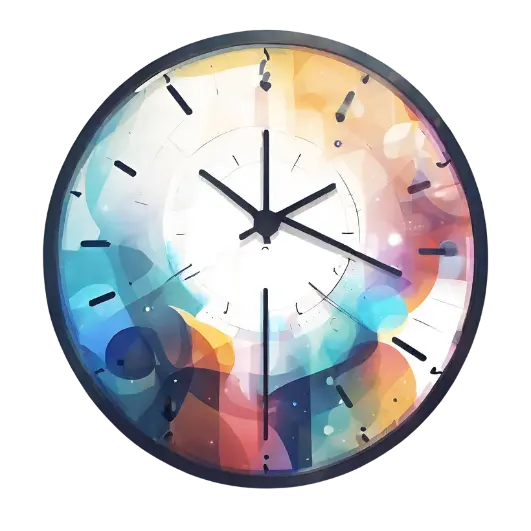Do you want to know how to organize your goals so that you can be happier?
Many people want to be more productive. They want to increase their income, have better relationships, and contribute to their community.
I’ve learned from launching many projects, some successes, and many crash-and-burn failures that what you think you want might turn out to be completely wrong. One of the biggest wastes is not finding out the truth of your goals.
In this article, you’ll learn some tips from the Day Design personal productivity system that will help get more out of your time. After reading, you’ll understand how to organize your day and make progress towards your most important goals.
Using Day Design to Organize Your Goals
To be a Day Designer, we have to become intentional with how much time we invest in ALL our goals. Each day we ask, are we putting in too much or too little?
Be honest—how do you organize your goals now? If we want to know the truth, we have to look at what we do. Our actions tell us what we care about, not what we think we care about.
If we examine how we typically operate, we’ll see that we’ve made Work our primary focus. We are result-driven, instead of process-driven.
We plan to organize our goals after we complete a project or achieve a certain level of success, but how often does it happen? New work piles up, taking priority over areas that we claim are important. We’ll get to it later, we tell ourselves. Isn’t that ironic?
We struggle to find balance, but it’s not hard to see why—we’ve made specific goals dominant over others. Organizing your life goals isn’t an existential question of happiness—it’s whether or not you’re taking actions towards particular goals or not.
Want to become more decisive? Watch: How to Be Decisive—5 Steps to Imperfect Action
Another element that we have to face is knowing what we want. How can we make meaningful progress or do something important if we’re unclear on what we’re after?
We have to make our goals explicit in each area of our lives—if we don’t, they will remain unclear, hidden, and meaningless. We can solve this dilemma by placing parameters on what we want to achieve, not just in Work but in other categories that are arguably more important to the quality of our lives.
Happiness Is a Reflection on Past Experiences
Our perspective on happiness is that it’s an ultimate end goal, and we think that if we work hard enough or do the right things, we’ll experience this profound state of completion. But that’s not how it works.
Happiness is a reflection on past experiences and has little to do with the present moment. We can be proactive and work hard, but we will never truly reach a “state of happiness” because it’s the result of our labors.
We experience fulfillment in hindsight. In the present, we’re facing challenges and obstacles regularly that we think are taking away from our happiness. The truth is that they create it.
Are you not feeling motivated? Watch: Top 3 Things to Do When You Don’t Feel Motivated
The big and important things that we need to do right now are not enjoyable. We have a lot of crazy shit going on and a lot to accomplish. It will require more effort than we can anticipate. It will be hard. And it will suck in the moment, but we’ll thank ourselves later.
We’ll look back later and be proud that we ran ourselves through the gauntlet and came out on the other side with a golden trophy to show the world. It’s proof that we were focused, committed, and will not be taken lightly. If we’ve done it before, then we can do it again. In this way, fulfilling our goals are the building blocks of stronger beliefs.
If we’re proactive at defining our goals using 360 Productivity mentioned next, we have a shot at generating more opportunities for fulfillment on a daily, weekly, yearly basis. This clarity allows us to quantify fulfillment with specific activities assigned to each goal.
Organize Your Goals Using Five Categories
As a generator, we create and send energy out into the world. We’re at the center, deciding what and for how long we send out a charge. Similar to strengthening neural pathways through practice, we reinforce the connection of our goal channels through repetition. Our actions create flow, allowing higher energy potential across each circuit.
Consider 360 Productivity: Health, Work, Relationships, Community, and Spiritual. We’re going to assign a timed interval to each of these categories. Get the most popular chapter from my book about using timed intervals. By taking time to categorize our goals in distinct areas, we’ll see the gaps in our actions.
Each goal channel can have many sub-channels under it: Business, finances, or a side-hustle can fall under Work. Friends, family, and kids can fall under Relationships. Learning, hobbies, and mediation can fall under Spiritual. There’s room for plenty of interpretation.
Boundaries Creates Clarity and Freedom
Everyone will interpret their channels differently, but defining that interpretation is integral to Day Design.
One might place learning a language to Spiritual, and another might put it in Relationships. Creating clear boundaries between goals helps to understand the connection between them.
Are you having trouble with managing life and work? Read: How to Reclaim Work Life Balance With Personal Productivity
We unlock the power of our productivity by defining our goal channels and subchannels. We often think that creating boundaries takes away our power, viewing it as a limitation on what should be left open-ended. The opposite is true—naming is what gives things their power.
Put differently, what’s a Spiritual goal for you? How about a Relationship goal? They’ll be completely different from person to person. Take the time to define your goals and assign them a label.
The areas of our lives that we claim are essential have lost their force because of our unwillingness to classify them. Putting a definitive box around our goal channels may seem counterintuitive, but it creates freedom, not limitation.
Managing Time Effectively by Being Intentional
We’re going to create time. We do this by becoming intentional and assigning an interval and a frequency to each channel. Taking this step will help us improve our relationship with time.
For Work, we assign an interval and a frequency to work on business activities. When it’s time to work, we focus on the most important action that we can take to move us closer to our deep goals. We complete the interval then move on.
For Relationships, it could be a 30-minute catch-up call with a friend. “Book it” into your calendar as a relationship goal, then complete the action on a specific day or during the week.
Want some tips on managing your time? Read: 4 Remarkably Simple Time Management Steps to Achieve Your Goals
We build time into our schedule for people who are important to us. We plan time, not leave it as an afterthought when we’re tired and irritable because we’ve been working all day. We’re going to install them into our day and week.
Now do the same for Health, Community, and Spiritual—create a weekly schedule and include timed intervals for each of the five channels.
When the week is over, you’ll have taken a specific action for a set amount of time towards a particular goal in each 360 Productivity channel. The amount of time you devote to each is irrelevant, as long as you take action.
Consistent micro-wins are what create big wins, not one grand action.
Go Deeper With Day Design Personal Productivity System
Anything worth doing doesn’t come easily. Remember, the things we want to achieve are called goals, not givens.
If we look back at anything that we’ve accomplished, we weren’t all that happy when we were going through it. We’re not aware of how events will contribute to our fulfillment until after they happen.
The level of integration between our goal categories is what drives our fulfillment. Whether it’s work or personal, our fulfillment is an accumulation of actions that we, at a later time, reflect on positively.
If you want to get more in-depth with personal productivity, sign up for the free Day Design video course. Thanks for reading!

